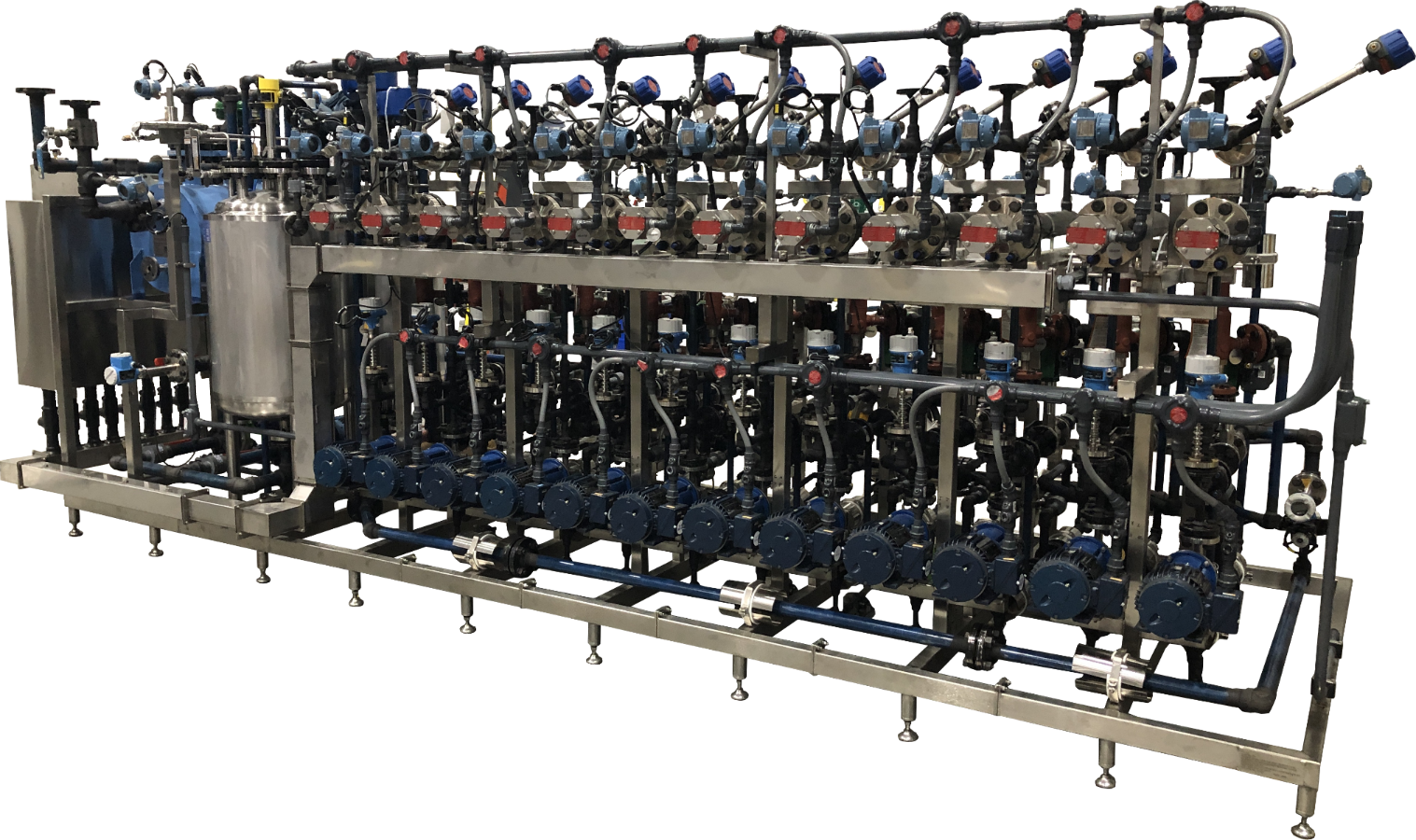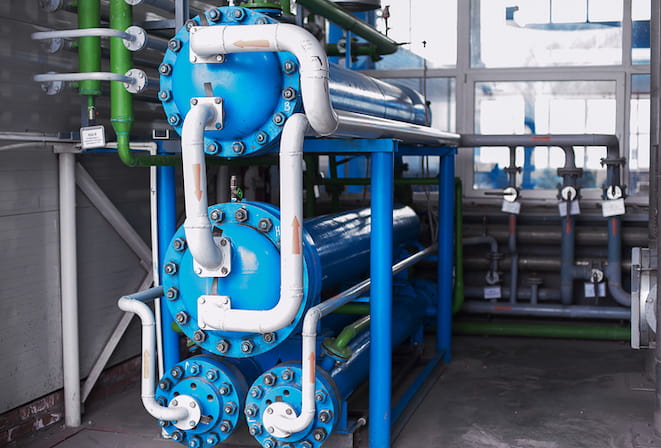Advancements in Heat Transfer Equipments: What You Need to Know for Ideal Efficiency
Developments in Heat transfer systems are changing performance throughout numerous industries. Advanced products like graphene and nanofluids promise significant renovations in thermal conductivity. The integration of IoT and device knowing offers opportunities for real-time tracking and improved energy performance. The landscape of thermal management is rapidly evolving. Comprehending these advancements is necessary for accomplishing perfect system efficiency and sustainability in the future. What certain improvements are shaping this transformation?
Emerging Products for Boosted Heat Transfer

Advanced Heat Exchanger Layouts
While traditional Heat exchangers have actually served their objective in different applications, advanced styles are now emerging to satisfy the raising needs for efficiency and performance. These cutting-edge designs, such as plate, shell-and-tube, and finned-tube Heat exchangers, include enhanced surface and enhanced circulation patterns to boost thermal transfer prices. Additionally, portable layouts permit lowered space requirements without compromising performance. Advanced products, such as composites and corrosion-resistant alloys, furthermore enhance sturdiness and efficiency under severe problems. Simulation innovations and computational fluid dynamics are increasingly used to fine-tune these styles, guaranteeing peak Heat transfer attributes. As sectors look for to decrease power usage and optimize output, the adoption of sophisticated Heat exchanger designs is pivotal in attaining these purposes.
The Function of Nanotechnology in Heat Transfer
Nanotechnology plays an essential role in boosting thermal conductivity within Heat transfer systems. By manipulating materials at the nanoscale, researchers have achieved significant enhancements in energy performance. These improvements not only maximize performance however likewise add to more sustainable power remedies.
Improved Thermal Conductivity
Substantial innovations in thermal conductivity have actually emerged via the application of nanotechnology, changing Heat transfer systems across various industries. By incorporating nanoparticles right into Heat transfer fluids and materials, scientists have actually achieved exceptional increases in thermal conductivity. These nanoparticles, such as carbon nanotubes, graphene, and steel oxides, enhance the Heat transfer buildings because of their high surface and one-of-a-kind thermal characteristics. The resulting composites exhibit enhanced performance in applications ranging from electronic devices cooling systems to renewable resource modern technologies. Furthermore, the capacity to tailor the size, shape, and make-up of nanoparticles permits enhanced thermal monitoring solutions. Because of this, nanotechnology proceeds to play a crucial duty in the growth of more reliable and efficient Heat transfer systems, leading the way for improved commercial applications.
Power Performance Improvements

Integration of IoT in Heat Transfer Equipments
The integration of IoT in Heat transfer systems introduces the application of smart sensing units that boost functional efficiency. These sensors enable real-time data monitoring, allowing for instant modifications and optimizations. This technical improvement has the prospective to significantly enhance performance and power administration in Heat transfer applications.
Smart Sensors Application
As Heat transfer systems advance, the integration of clever sensors with the Web of Points (IoT) has actually become a transformative approach. These sensing units enable real-time monitoring of circulation, temperature, and pressure rates, boosting system effectiveness and dependability. By accumulating and sending information, they promote positive upkeep, lowering the risk of system failings. Furthermore, wise sensors add to power savings by refining functional parameters based upon environmental conditions. Their capacity to examine abnormalities and fads enables for notified decision-making, ensuring peak efficiency of Heat transfer systems. As industries significantly embrace this modern technology, the implementation of wise sensors stands to reinvent how Heat transfer systems are taken care of, paving the way for better sustainability and enhanced efficiency outcomes.
Real-Time Information Monitoring
How can real-time information monitoring improve the efficiency of Heat transfer systems? By integrating Web of Things (IoT) innovation, Heat transfer systems can leverage continuous information collection from smart sensors. This real-time tracking enables prompt analysis of flow, stress, and temperature rates, making it possible for operators to determine inadequacies without delay. Adjustments can be made to enhance performance, decrease energy consumption, and expand equipment life expectancy. Furthermore, predictive maintenance can be applied, lessening unexpected downtime and expensive fixings. The capability to visualize efficiency metrics with control panels improves decision-making, cultivating an aggressive strategy to system administration. Ultimately, real-time data keeping track of not only enhances functional efficiency yet likewise adds to sustainability goals within commercial processes.
Energy Efficiency and Sustainability Trends
Energy performance and sustainability trends are reshaping the landscape of Heat transfer systems, driving innovation and conformity across various industries. Organizations are increasingly focusing on energy-efficient styles to decrease operational expenses and minimize environmental influences. The integration of sustainable energy sources is ending up being much more prevalent, making it possible for Heat transfer systems to run sustainably while fulfilling regulatory requirements. Furthermore, developments in innovations and materials promote lower energy usage and boost overall performance. Lifecycle analyses are additionally getting grip, permitting companies to review the ecological effect of Heat transfer systems from manufacturing to disposal. This have a peek at this website focus on sustainability not only supports corporate obligation but additionally settings companies competitively in a market where customers increasingly favor environment-friendly services. Subsequently, energy performance and sustainability remain crucial considerations for future advancements in Heat transfer technology.
Advancements in Thermal Management Solutions
While the need for effective Heat transfer proceeds to climb, advancements in thermal administration options are arising to attend to both efficiency and sustainability challenges. Advanced products, such as stage change materials and nanofluids, are being established to enhance Heat transfer effectiveness - DVS Heat Transfer Systems. These materials boost thermal conductivity and enable much better temperature level policy in various applications. Additionally, technologies like energetic thermal control systems are getting grip, enabling real-time modifications to manage Heat circulation efficiently. These systems contribute to energy financial savings and decrease the environmental influence of thermal processes. The assimilation of IoT in thermal monitoring facilitates surveillance and predictive maintenance, ensuring optimized efficiency and long life of Heat transfer systems. Generally, these advancements stand for substantial strides towards even more sustainable thermal management practices
Future Directions in Heat Transfer Innovation
Emerging improvements in thermal administration services indicate a promising future for Heat transfer modern technology. Researchers are significantly concentrating on developing materials with remarkable thermal conductivity and boosted energy efficiency. Technologies such as nanofluids, which have suspended nanoparticles, use considerable improvements in Heat transfer efficiency. In addition, the assimilation of clever materials that adjust to differing temperature conditions is acquiring traction, enabling more responsive and effective systems. The surge of additive production strategies is also enabling the style of complicated Heat exchanger geometries that optimize liquid circulation. In addition, the application of device learning formulas is prepared for to revolutionize the optimization of Heat transfer systems, promoting anticipating upkeep and performance improvement. Collectively, these advancements are positioned to transform the landscape of Heat transfer technologies in different sectors.

Often Asked Questions

How Do I Select the Right Heat Transfer System for My Application?
Selecting the best Heat transfer system involves Visit Your URL reviewing application demands, including temperature varieties, liquid residential properties, and performance requirements. Analyzing system types, upkeep factors to consider, and cost-effectiveness likewise plays a crucial function in making an informed decision.
What Are the Upkeep Demands for Advanced Heat Exchangers?
Maintenance requirements for sophisticated Heat exchangers commonly consist of regular assessments, checking for leakages, cleaning of surface areas, and guaranteeing ideal flow rates. Sticking to maker standards warranties efficient operation and prolongs the equipment's life expectancy.
Exactly How Do Environmental Elements Affect Heat Transfer Efficiency?
Ecological aspects substantially affect Heat transfer efficiency. Variations in humidity, temperature level, and air movement effect thermal conductivity check my blog and convective Heat transfer, inevitably impacting system efficiency and requiring consideration throughout the design and procedure of Heat transfer systems.
What Safety Specifications Apply to Heat Transfer Systems?
Safety requirements for Heat transfer systems commonly include guidelines from organizations such as ASME and ASTM. DVS Heat Transfer Systems. These criteria address products, style, and operational techniques to guarantee dependability, efficiency, and security versus threats in various applications
Just How Can I Fix Usual Heat Transfer System Issues?
Troubleshooting common Heat transfer system problems entails inspecting for leaks, making certain proper fluid flow, examining insulation integrity, and confirming temperature differentials. Determining these aspects can assist maintain system performance and stop more issues.
Nanotechnology plays an essential duty in boosting thermal conductivity within Heat transfer systems. Substantial developments in thermal conductivity have arised through the application of nanotechnology, transforming Heat transfer systems across different sectors. Developments in thermal conductivity through nanotechnology have actually led the method for remarkable enhancements in power effectiveness within Heat transfer systems. Power effectiveness and sustainability patterns are reshaping the landscape of Heat transfer systems, driving advancement and conformity across different industries. The integration of IoT in thermal administration assists in monitoring and anticipating maintenance, guaranteeing optimized performance and long life of Heat transfer systems.